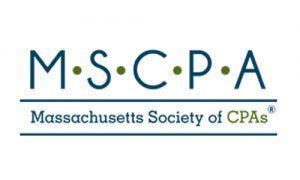Tax filing reminders
- January 16 – Due date for the fourth installment of 2017 individual estimated tax.
- January 31 –
- Due date for employers to furnish W-2 statements to employees, and to file Forms W-2 with the Social Security Administration (both paper and electronic forms).
- Due date for payers to provide most Forms 1099-MISC with non-employee compensation in box 7 to recipients and to the IRS.
- Employers must file 2017 federal unemployment tax returns and pay any tax due.
- Due date for providers to send Forms 1095 to recipients and the IRS.
Looking ahead: Tax reform in 2018
Congress has passed tax reform that will take effect in 2018, ushering in some of the most significant tax changes in three decades. Here are some major items in the new bill that impact individual taxpayers.
- Reduces income tax brackets. The bill retains seven brackets, but at reduced rates, with the highest tax bracket dropping to 37 percent from 39.6 percent.
- Double standard deductions. The standard deduction nearly doubles to $12,000 for single filers and $24,000 for married filing jointly. To help cover the cost, personal exemptions and most additional standard deductions are suspended.
- Limits itemized deductions. Many itemized deductions are no longer available, or are now limited. Here are some of the major examples:
- Caps state and local tax deductions. State and local tax deductions are limited to $10,000 total for all property, income and sales taxes.
- Caps mortgage interest deductions. For newly acquired homes, mortgage interest will be deductible only for mortgages of less than $750,000. Existing homeowners are unaffected by the new cap. The bill also suspends the deductibility of interest on equity debt.
- Limit on theft and casualty losses. Now only available for federally declared disaster areas.
- No more 2 percent miscellaneous deductions. Most miscellaneous deductions subject to the 2 percent of adjusted gross income threshold are now gone.
- Cuts some above-the-line deductions. Moving expense deductions get eliminated except for active-duty military personnel, along with alimony deductions beginning in 2019.
- Weakens the alternative minimum tax (AMT). The bill retains the alternative minimum tax but changes the exemption to $109,400 for joint filers and the phaseout threshold to $1 million. The changes mean the AMT will affect far fewer people than before.
- Bumps up child tax credit, adds family tax credit. The child tax credit increases to $2,000 from $1,000, with $1,400 of it being refundable even if no tax is owed. The phaseout threshold increases sharply to $400,000 from $110,000 for joint filers, making it available to more taxpayers. Also, dependents ineligible for the child tax credit can qualify for a new $500-per-person family tax credit.
- Expands use of 529 education savings plans. Tax-deductible contributions to 529 education savings plans can now be used to pay tuition for students in K-12 private schools.
- Doubles estate tax exemption. Estate taxes will apply to fewer people, with the exemption doubled to $11.2 million ($22.4 million for a married couple).
- Reduces pass-through business taxes. Most owners of pass-through entities such as S corporations, partnerships and sole proprietorships will see their income tax lowered with a new 20 percent income reduction calculation.
Mileage rates for 2018
The IRS recently announced mileage rates to be used for travel in 2018. The standard business mileage rate increased by 1 cent to 54.5 cents per mile. The medical and moving mileage rates also increased by 1 cent, to 18 cents per mile. Charitable mileage rates remained unchanged at 14 cents per mile.
Remember to properly document your mileage to receive full credit for your miles driven.
The best way to avoid an audit: Preparation
Getting audited by the IRS is no fun. Some taxpayers are selected for random audits every year, but the chances of that happening to you are very small. You are much more likely to fall under the IRS’s gaze if you make one of several common mistakes.
That means your best chance of avoiding an audit is by doing things right before you file your return this year. Here are some suggestions:
Don’t leave anything out. Missing or incomplete information on your return will trigger an audit letter automatically, since the IRS gets copies of the same tax forms (such as W-2s and 1099s) that you do.
Double-check your numbers. Bad math will get you audited. People often make calculation errors when they do their returns, especially if they do them without assistance. In 2016, the IRS sent out more than 1.6 million examination letters correcting math errors. The most frequent errors occurred in people’s calculation of their amount of tax due, as well as the number of exemptions and deductions they claimed.
Don’t stand out. The IRS takes a closer look at business expenses, charitable donations and high-value itemized deductions. IRS computers reference statistical data on which amounts of these items are typical for various professions and income levels. If what you are claiming is significantly different from what is typical, it may be flagged for review.
Have your documentation in order. Keep your records in order by being meticulous about your recordkeeping. Items that will support the tax breaks you take include: cancelled checks, receipts, credit card and investment statements, logs for mileage and business meals, and proof of charitable donations. With proper documentation, a correspondence letter from the IRS inquiring about a particular deduction can be quickly resolved before it turns into a full-blown audit.
Remember, the average person has a less than 1 percent chance of being audited. If you prepare now, you can narrow your audit chances even further and rest easy after you’ve filed.





